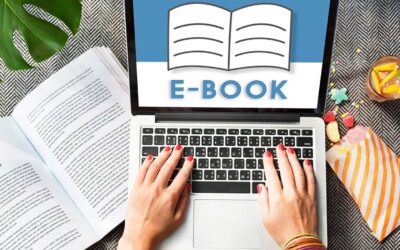In today’s digital age, businesses have a plethora of options when it comes to creating marketing collateral. E-books and brochures are two popular formats, each with its own unique advantages and applications. But how do you determine which format is best suited for conveying your message? In this blog post, we’ll explore the differences between e-books and brochures and provide insights to help you make an informed decision.
Understanding E-books
E-books, short for electronic books, are digital publications that can be read on electronic devices such as computers, tablets, and e-readers. They are typically longer-form content pieces that delve into a specific topic in depth. E-books offer several benefits, including:
- Scalability: E-books can be easily distributed to a wide audience without incurring printing or shipping costs.
- Interactivity: E-books can include multimedia elements such as videos, animations, and interactive quizzes to engage readers.
- Searchability: Readers can easily search for specific information within an e-book, making it convenient for referencing.
Understanding Brochures
Brochures, on the other hand, are printed materials that provide concise information about a product, service, or organization. They are typically designed for offline distribution and are often used for marketing or informational purposes. Brochures offer several advantages, including:
- Tangibility: Brochures provide a physical representation of your brand that customers can hold and keep.
- Portability: Brochures are easy to carry and distribute at events, trade shows, or in-person meetings.
- Visual Impact: Brochures can make a strong visual impression with eye-catching design elements and high-quality printing.
Choosing the Right Format
When deciding between e-books and brochures, consider the following factors:
- Content Length: E-books are better suited for longer-form content that requires in-depth exploration, while brochures are ideal for concise information that can be consumed quickly.
- Audience Preference: Consider how your target audience prefers to consume content. Younger, tech-savvy audiences may prefer e-books, while older audiences or those without regular internet access may prefer brochures.
- Distribution Channel: Determine where and how you plan to distribute your marketing collateral. E-books are suitable for online distribution via websites, email, or social media, while brochures are better suited for offline distribution at events or in physical locations.
Conclusion
Both e-books and brochures have their own strengths and applications in marketing. By understanding the differences between the two formats and considering your specific goals and audience preferences, you can choose the format that best aligns with your message and objectives. Whether you opt for the digital versatility of e-books or the tangible impact of brochures, both formats offer effective ways to communicate with your audience and drive engagement with your brand.
Search
Categories
- AI 3
- Analytics & Data Science 16
- Blogs 8
- Brand Identity 23
- Business 10
- CMS & LMS 22
- Development 1
- Digital Marketing 20
- Digital Signage 12
- E-commerce 6
- Education & E-Learning 1
- Enterprise solution 15
- Events 2
- Food & Grocery 1
- Internet of Things 9
- Mobile App Development 15
- News 5
- Open Source Development 12
- SEO Search engine optimization 2
- Software 1
- Staff Augmentation 3
- Uncategorized 24
- Web Design 1
- Web Development 19
- Web Security and Performance 19
- Website Development 2
- WordPress Development 3
Recent Posts
-
Les avantages de choisir un casino proposant des free spins attractifs pour les joueurs
-
Arlequin Casino et ses promotions exclusives qui transforment les jeux en ligne
-
Tendances actuelles des casinos Neosurf et leur impact sur l’industrie du jeu
-
مقارنة شاملة بين كازينوهات قطر التي تعتمد على استخدام VPN
-
Les bénéfices de l’utilisation de Paysafecard dans les casinos en ligne sans soucis


